- Standard equipment list
- Aftersales package
- Handsome SUV
- No lumbar support
- Indecisive transmission
- Diesel can get a little noisy
Once the butt of jokes, South Korean car brand Kia is on the continual rise globally. One of the only brands in Australia to actually increase its sales in COVID-struck 2020 (versus 2019), Kia is a strong success story. While cars like the Stinger attract all the attention, it’s more humble products such as the Sportage that we think deserve more attention. So in a sea of the crowded medium SUV segment, does the 2020 Kia Sportage S CRDi AWD have what it takes to stand out?
Price/Specs:
The 2020 Sportage range is priced from just over $30,000 drive away and is available in four different models: S, SX, SX+ and top-spec GT-Line. There are three engines, front- or all-wheel drive and even the choice of manual (in the lower two trims – thank you Kia!) or automatic transmissions to choose from.
We tested the entry level 2020 Kia Sportage S. You can choose a 2.0-litre petrol engine with either a six-speed manual or auto but our test car was fitted with a 2.0-litre turbo diesel engine and all-wheel drive with a new eight-speed automatic transmission. Pricing for the S diesel AWD is $37,190 drive away.
Despite being a base model, the Sportage S is well equipped. There’s a 7.0-inch touchscreen with Apple CarPlay and Android Auto (though no sat nav), a reversing camera and rear parking sensors, dual-zone climate control, auto lights and auto wipers, LED daytime running lights, front fog lights, 17-inch alloy wheels (with a full-size alloy spare), auto-folding mirrors and a smattering of active safety kit including auto emergency braking (AEB) with forward collision warning, lane keep assist with lane departure warning and auto high beam.
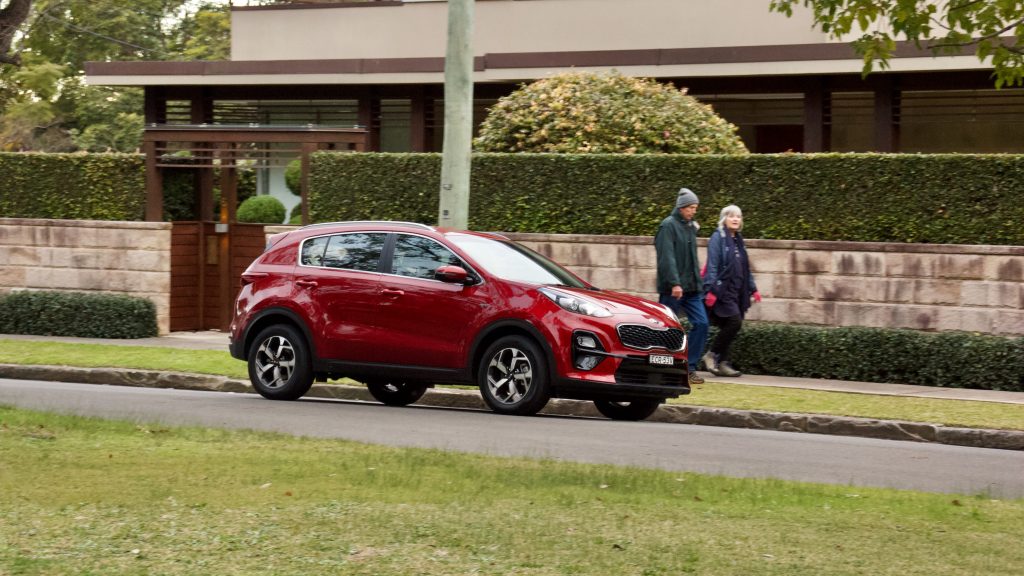
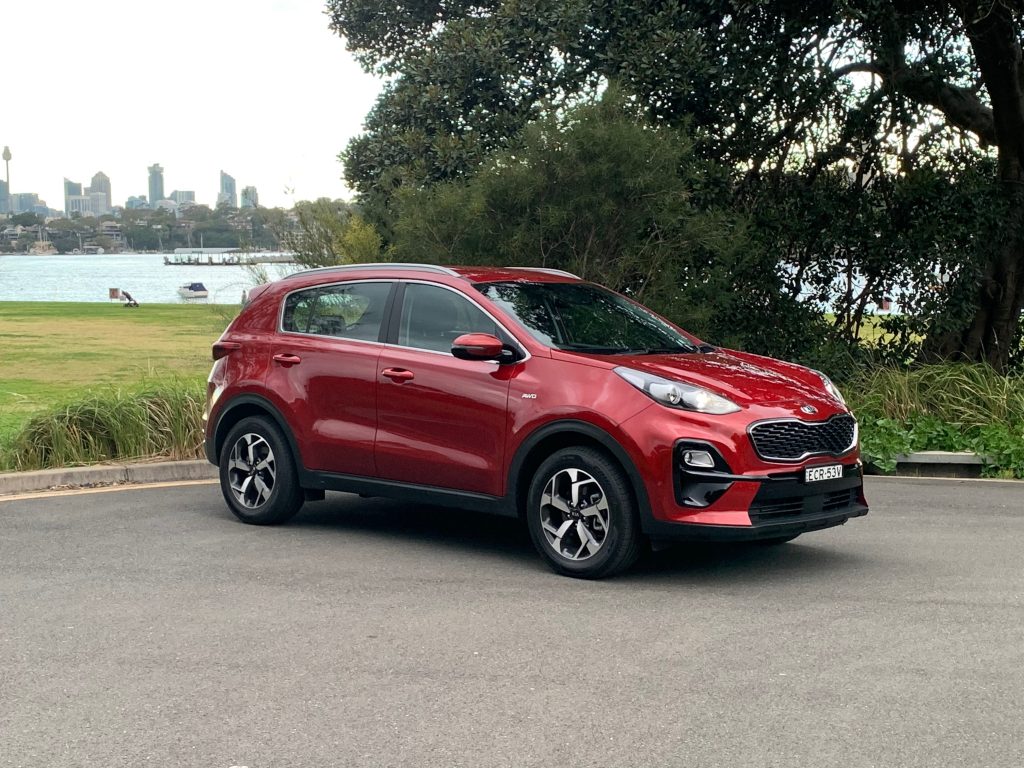
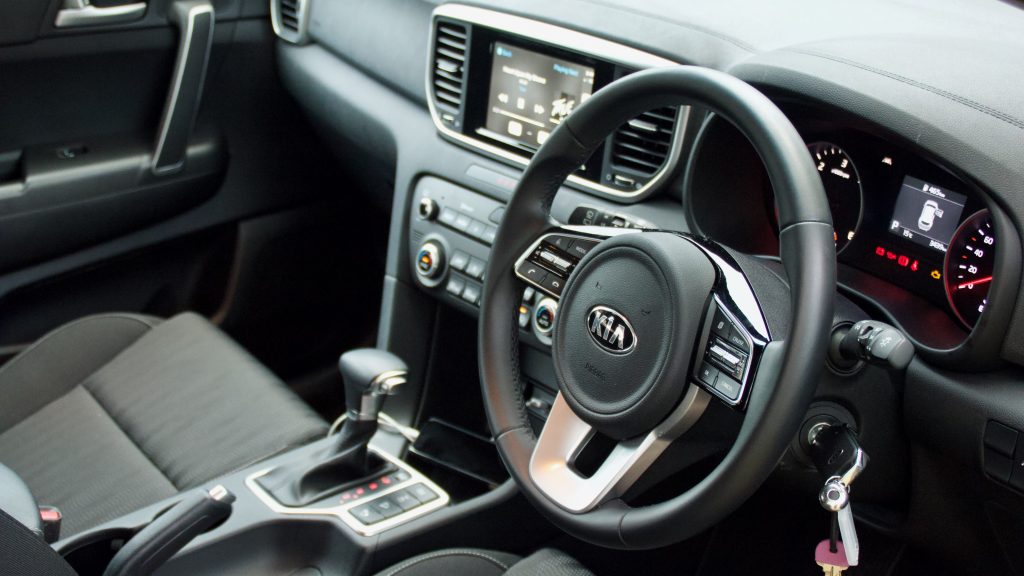
An extra $2,500 spend to the SX gets you front parking sensors, larger 18-inch wheels, a larger 8.0-inch touchscreen with inbuilt satellite navigation, digital radio and a JBL sound system. Above that sits the SX+ with its leather upholstery and keyless entry and start, and the GT-Line with its LED lighting and panoramic sunroof. You can spend up close to $50,000 for the Sportage GT-Line diesel, but we think the S is better value for money.
How does this compare to competitors? Well if you want a diesel-powered medium SUV, your choices are surprisingly limited – it’s either the Sportage or its Hyundai Tucson cousin, or the Mazda CX-5. Here the Sportage looks like particularly good value as it’s only $800 more than the least expensive Tucson diesel, yet it has more standard equipment. Mazda doesn’t offer a base model diesel CX-5, so it’s a big $7,050 jump from the Sportage to the cheapest diesel CX-5, the Maxx Sport.
Engine/Drive:
The 2020 Kia Sportage is powered by a 136kW/400Nm 2.0-litre four-cylinder turbo diesel engine that’s matched to a standard all-wheel drive system and an eight-speed automatic transmission.
While diesel fuel isn’t particularly in favour with new car buyers, we would strongly consider it because this diesel engine is torquey and while its fuel economy isn’t stellar (we averaged 8L/100km over our week with it versus the claimed 6.4L/100km combined figure), it’s far more efficient and flexible than the 2.0-litre petrol Sportage in our experience.
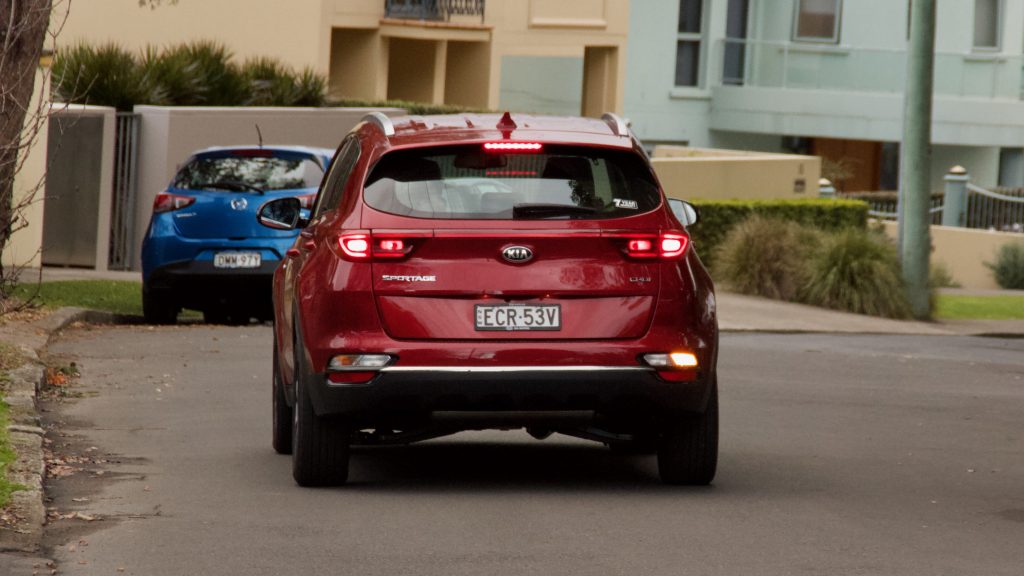
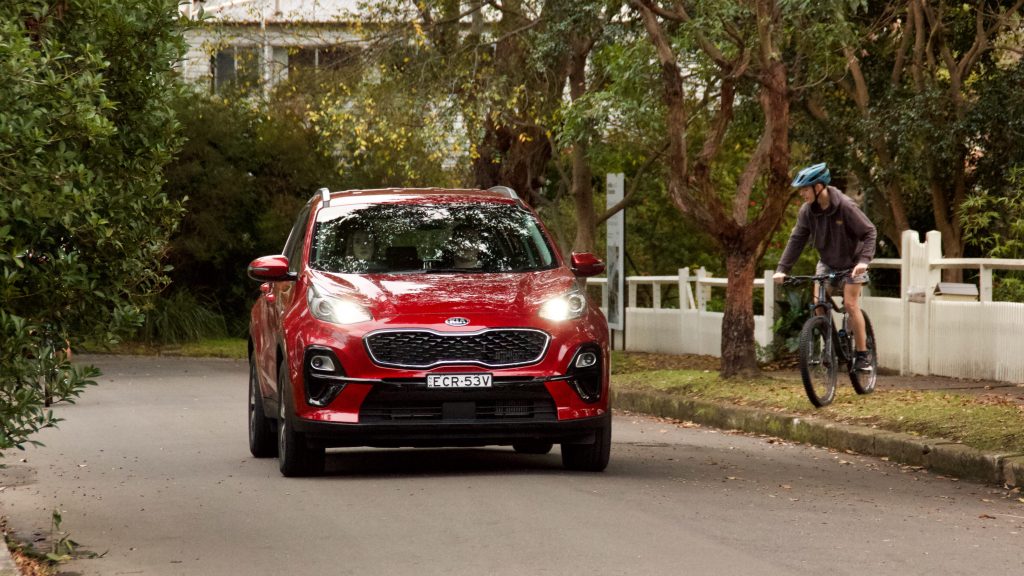
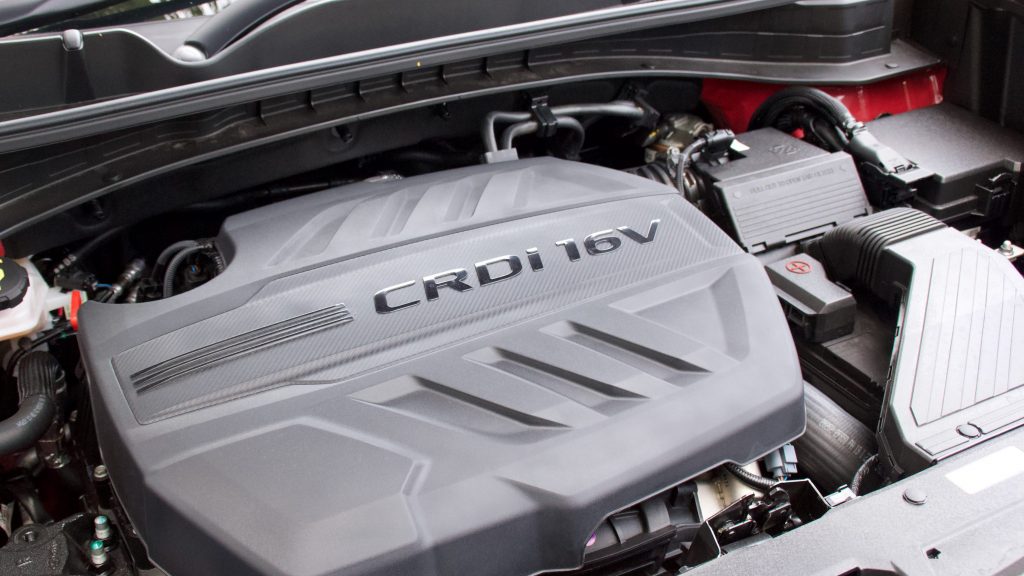
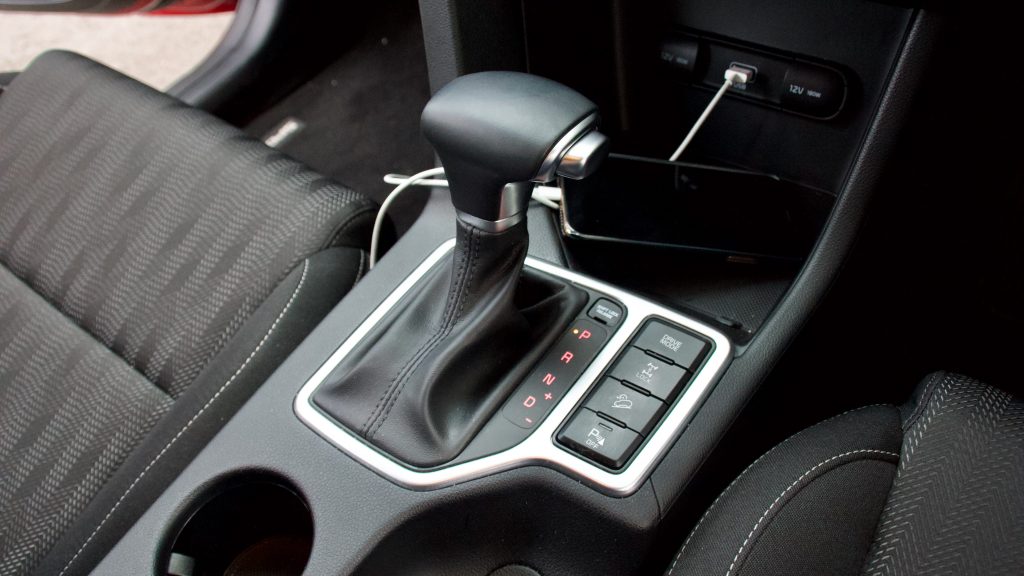
The new eight-speed auto gearbox replaces a six-speed unit, and has closely-spaced ratios to get the most out of the engine. It can be somewhat indecisive around town as it has so many gears to choose from, but on a highway cruise it gets into eighth gear and settles down. It’s a relatively quiet diesel engine too, especially at speed.
It would be nice to see Kia fit the Sportage with a stop/start system locally to increase fuel economy, and while we’re discussing negatives, the brake feel can be inconsistent in the Sportage. You sometimes don’t realise that you need more braking effort, which can be alarming.
We’d choose a diesel Sportage over the lacklustre petrol variants, though it would be nice if Kia Australia offered the 180kW/350Nm 2.0-litre turbo Sportage that’s available in North America. That would give the Sportage more spunk to go with its great chassis.
Ride/Handling:
Like the rest of the Kia range locally, the Sportage is tuned for Australian tastes and it shows: this is a car that really drives well. You can never escape the feeling that it’s a heavy beast (and at 1,763kg tare, it is), but it’s agile enough, and the ride quality is well tuned. The steering feels more natural than the smaller Seltos, and although the diesel does feel heavier than the petrol Sportage, you’d unlikely notice.
At speed, road noise levels are pleasingly low, and the Sportage cruises with ease. Rear visibility is excellent thanks to large windows and mirrors, though we’d like to see blind-spot monitoring with rear cross-traffic alert filter through the range – it’s only currently available on the top-spec GT-Line. The view over the front can be slightly blocked too, thanks to the sides of the bonnet – we’d consider the SX, which adds front parking sensors, for this reason alone.
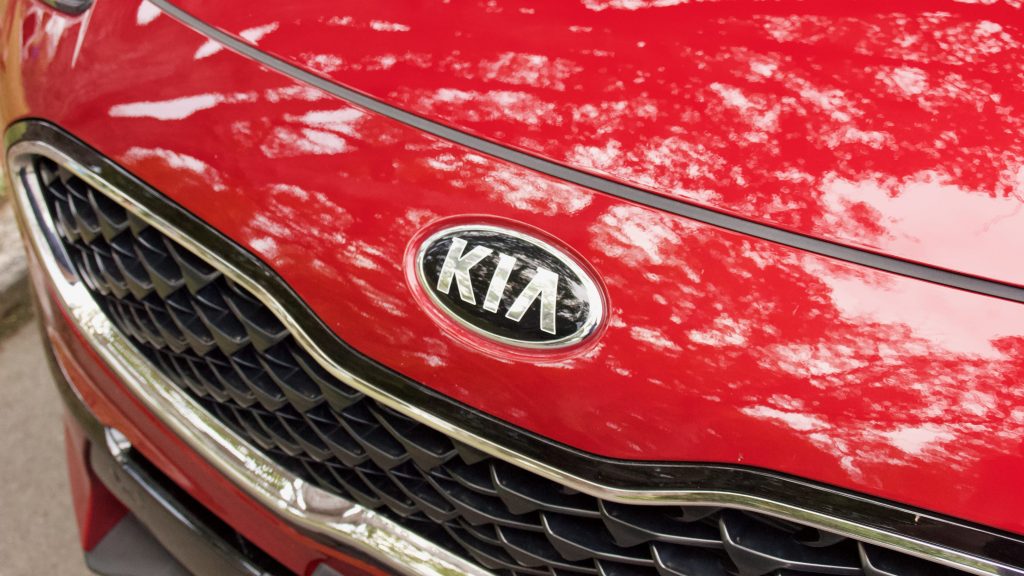
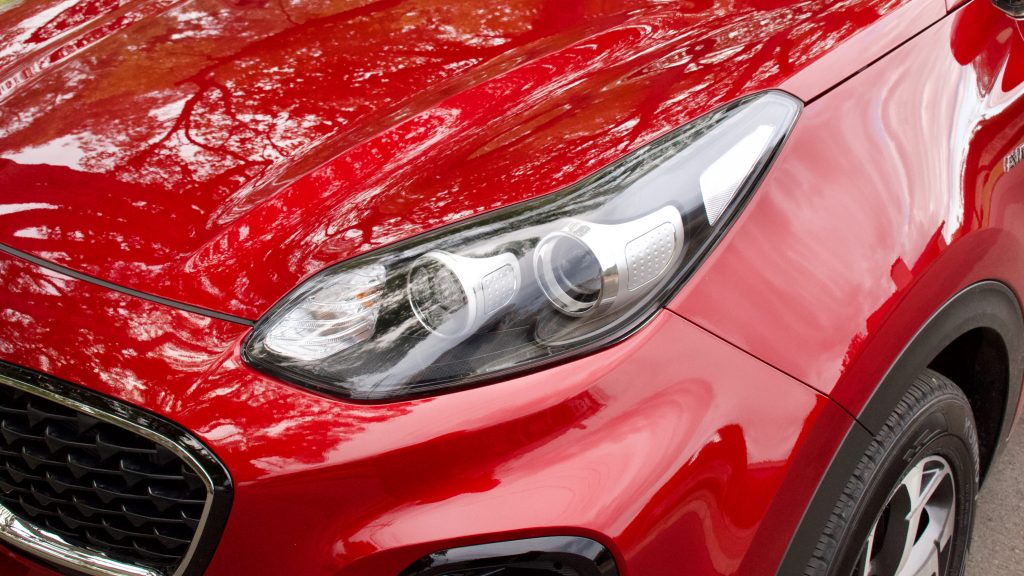
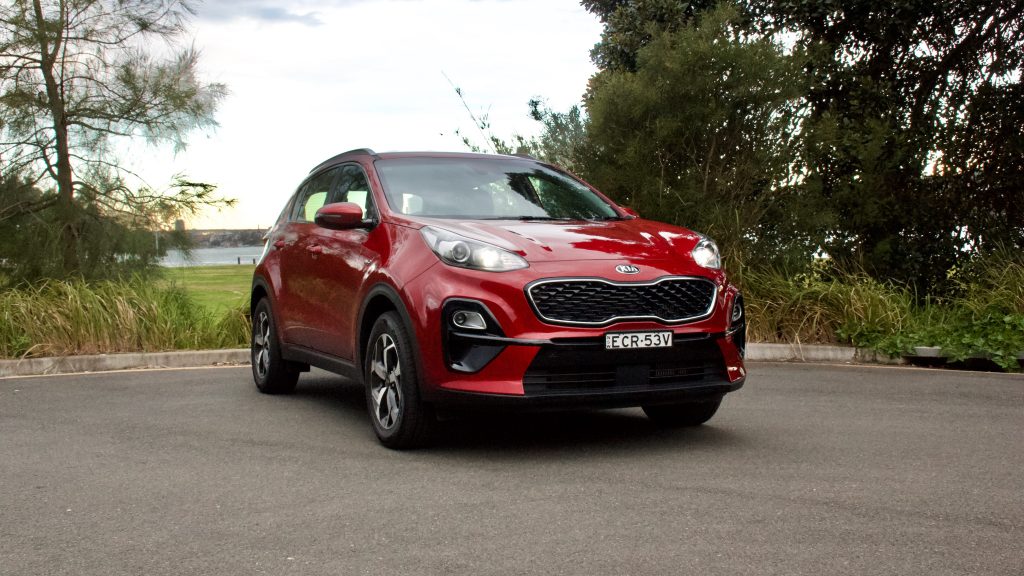
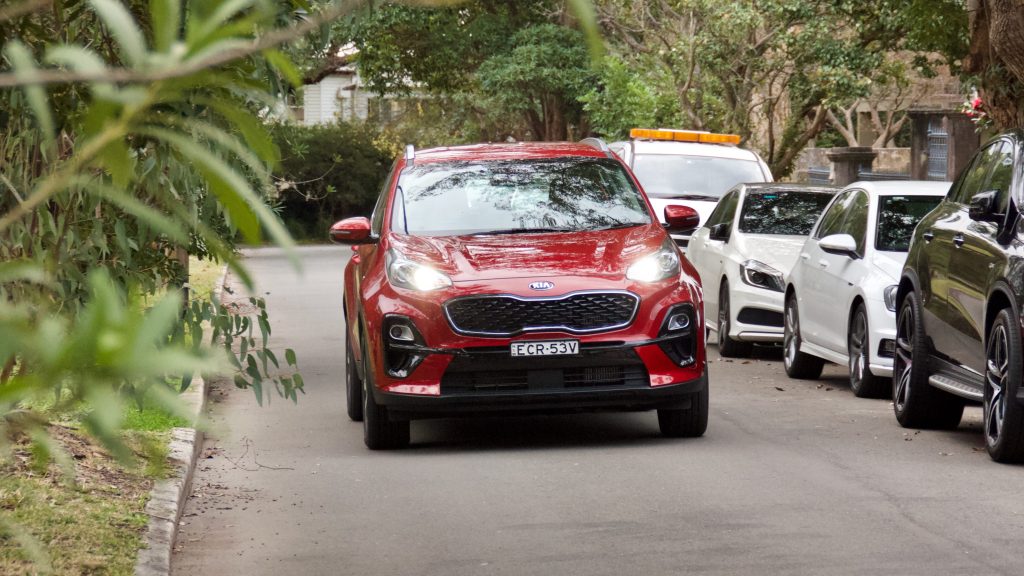
The Sportage is well-tuned to Australian roads, and while it’s not the most exciting drive – what medium SUV is? – it is a quiet and comfortable car that’s really excellent at travelling long distances. Sydney to Brisbane would be no trouble for the Sportage.
Interior/Practicality:
If there is an area where the Sportage feels its 2015 vintage, it’s inside. Everything is well made and it feels built to last, but like the Seltos, an extra layer of finishing would be nice. Thankfully – unlike the Seltos – there are soft touch materials atop the dashboard and front door tops, and switchgear like the steering wheel controls feel like quality items.
The infotainment system is a breeze to use, and while it doesn’t feature inbuilt nav (which could be important for the country buyers this spec is aimed at), it does have Apple CarPlay and Android Auto smartphone mirroring. Its colours are pleasing to the eye, and there are great shortcut buttons below the screen to help get the most out of it.
The front seats are rather basic, though are reasonably comfortable. It would be nice to see them with a greater range of adjustment though- lumbar and under-thigh settings would be helpful on longer journeys.
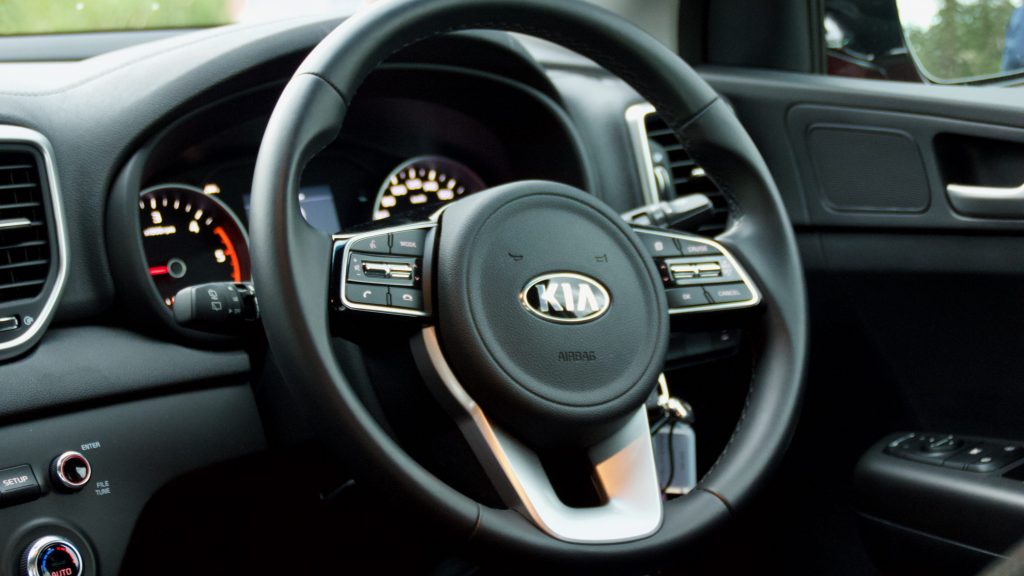
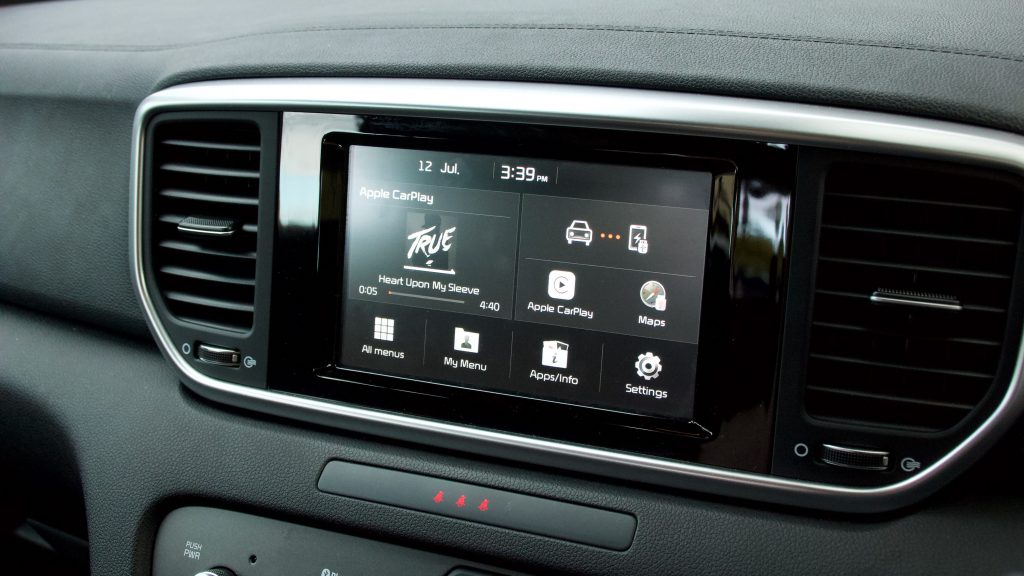
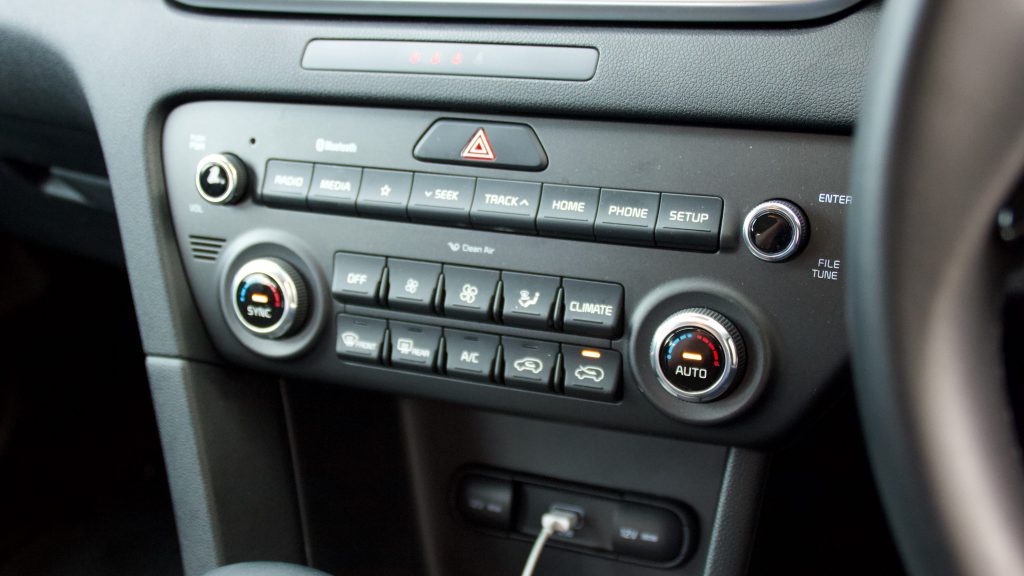
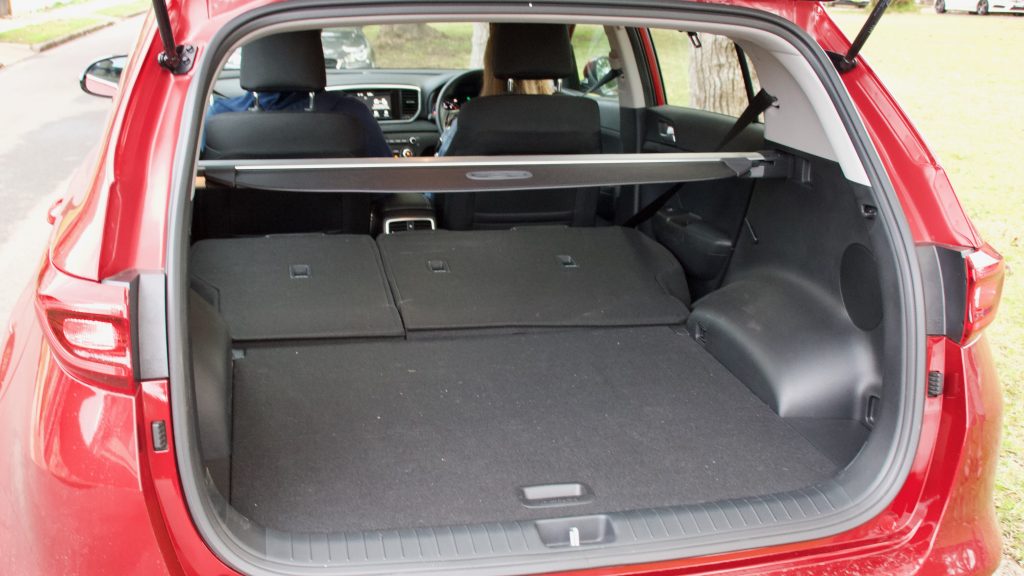
The Sportage has a spacious cabin, with more than ample room for four adults – five will fit at a pinch, too. The rear seat features amenities such as a centre armrest with cup holders, air vents and even charging ports so that devices can be topped up and kids’ happiness remains. It’s no wonder so many Sportages are chosen by ride-share drivers as unlike the CX-5, lots of thought has been put into the rear seat space.
The boot is reasonable at 466-litres – the CX-5’s space is only 442L, for example, though a smaller Skoda Karoq features almost 600L of space. There’s no under floor storage, though unlike many rivals, there is a full-size alloy spare wheel.
Frustratingly, you can only fold the rear seats down by pulling a prong located at the rear seat base – when you do so, you open up 1,455-litres of space from the flat-folding seats, which is 113L more than the CX-5. It would be nice to see more clever touches such as bag hooks, which would help user-friendliness. The tailgate is not electric, but it’s light and easy to open and close.
Running Costs/Warranty:
Like all other Kias in Australia, the Sportage comes with the brand’s industry-leading seven-year/unlimited km warranty. This also includes one year of roadside assistance, which is topped up by 12 months at every Kia dealership service up to eight years in total. Servicing intervals are once yearly/every 15,000km, whichever comes first.
Servicing the 2020 Kia Sportage is not cheap, however. Over five years, the cost of servicing the Sportage is $2,592, or an average of $519 per service. A Mazda CX-5 costs $2,092 (an average of $419 per service) over the same time period, though it has shorter 10,000km intervals for servicing and will need another service to match the Kia’s distance, which is something to keep in mind. The Tucson with the same drivetrain as the Sportage costs $2,070, of $414 per service.
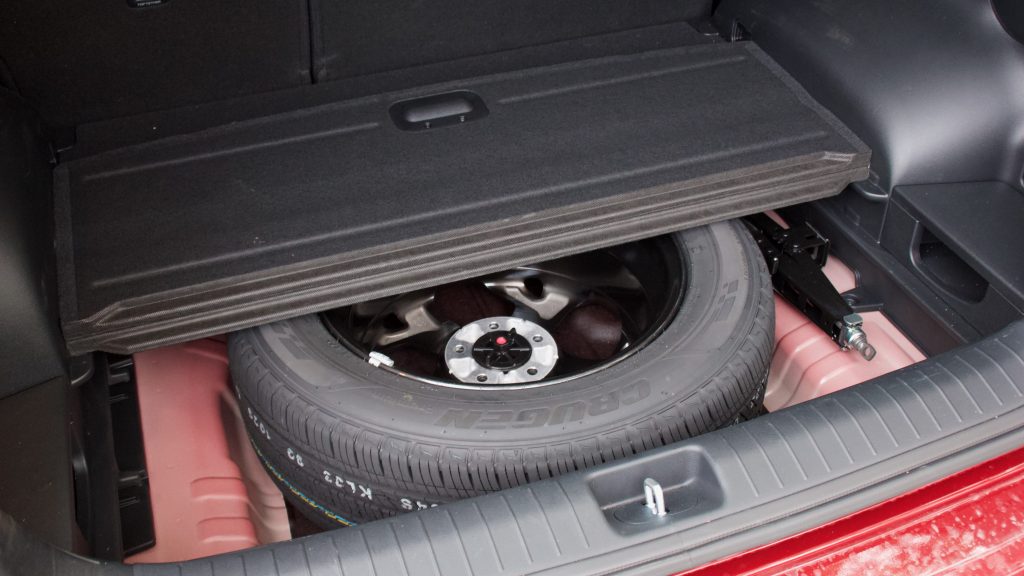
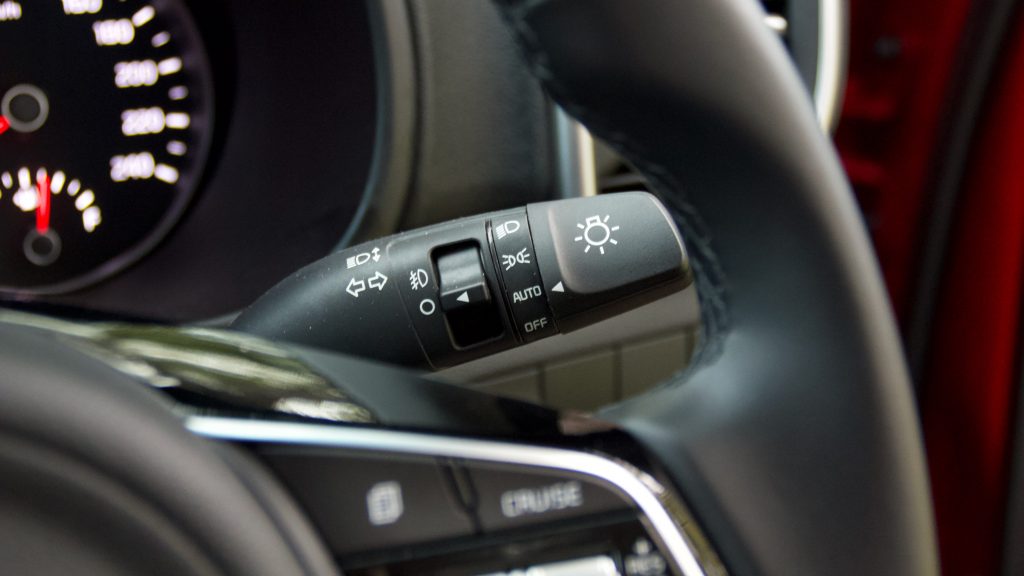
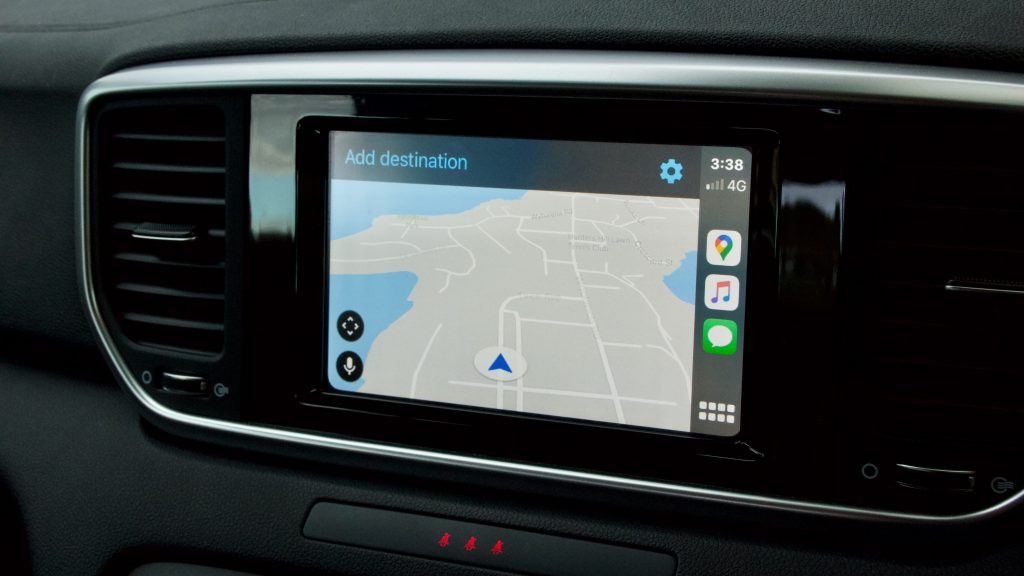
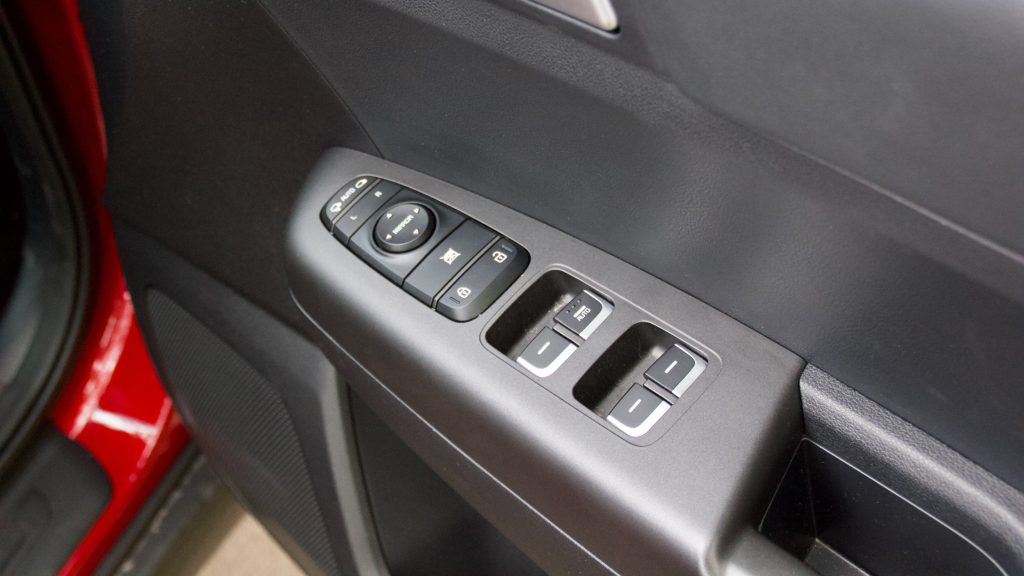
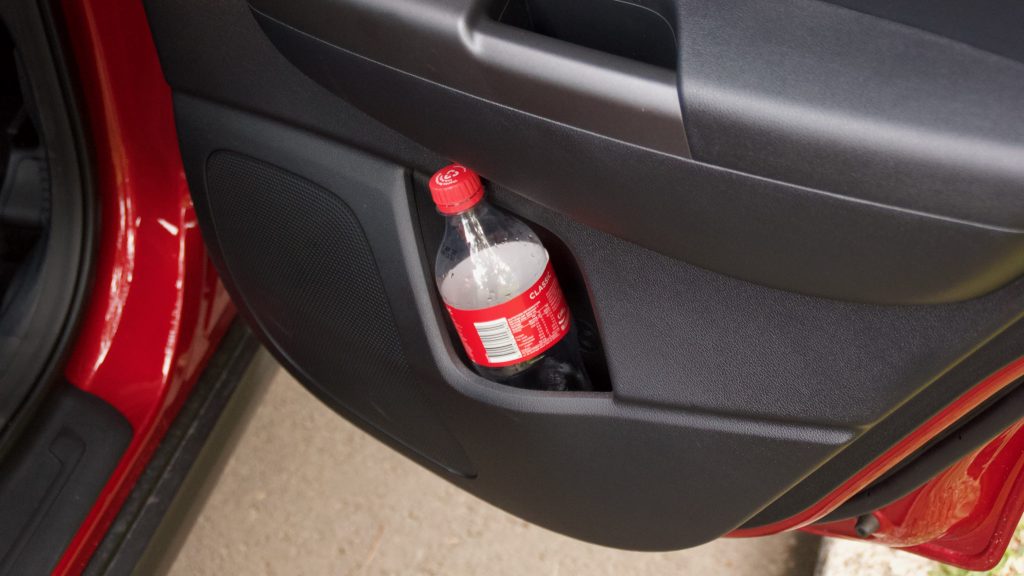
Like the CX-5, the Tucson also comes with a five-year warranty, which is less than Kia’s seven-year term. So while the Kia’s servicing costs more, its warranty is longer if that matters to you.
Conclusion:
In terms of overall ability, the 2020 Kia Sportage is a Jack-of-all-trades. It’s not the most exciting, nor the most fuel efficient, and it’s certainly not the most luxurious SUV either, but with a strong list of attributes, it’s easy to recommend if you’re searching for a such a car.
We’d recommend the diesel if you do a reasonable amount of kilometres each year, or if you live in country areas, as it’s a much preferable engine to the standard 2.0-litre petrol – it’s gruntier, more refined and more efficient. And with a strong list of standard equipment, the 2020 Kia Sportage S diesel gives very little to complain about.
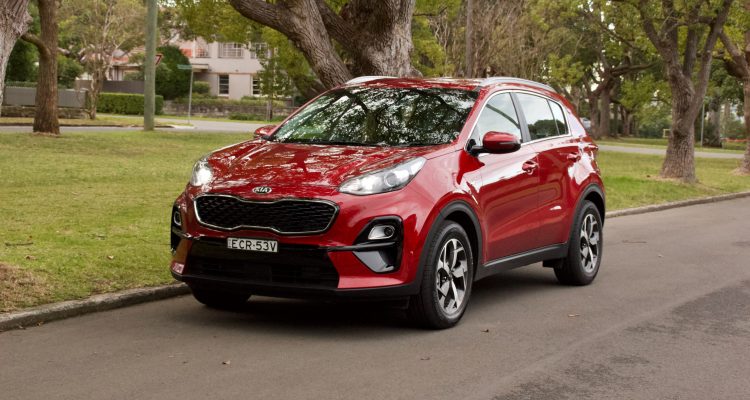
Leave a Reply